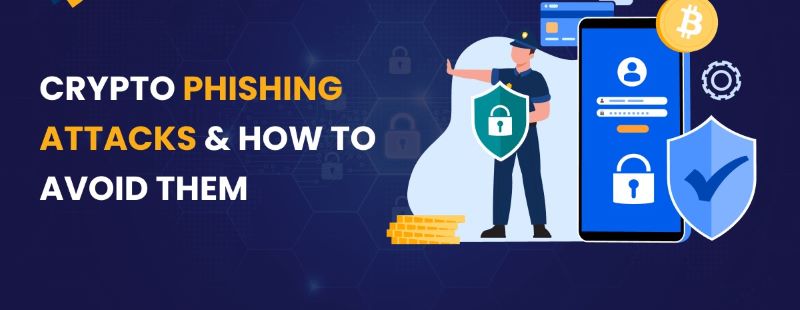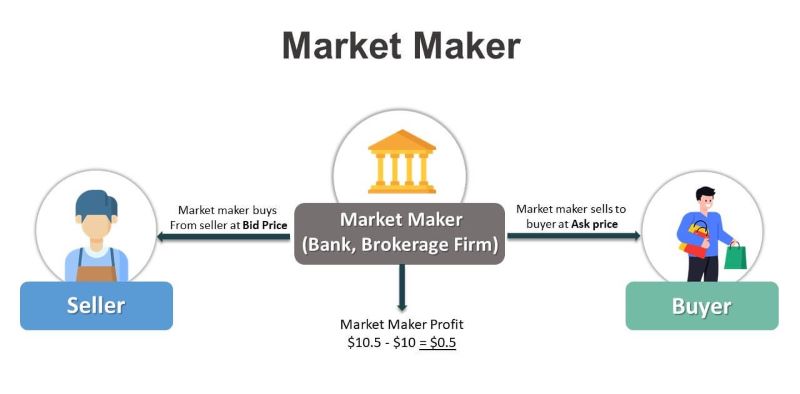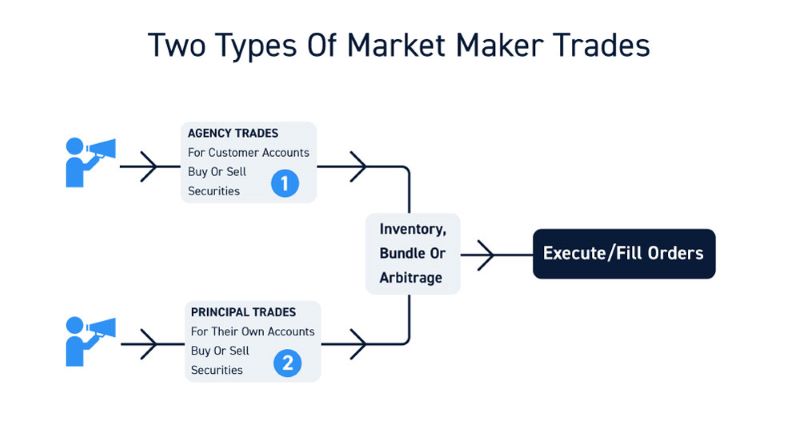Phishing Attack in Crypto Uncovered: Secure Your Digital Wealth Now
In the buzzing world of crypto, your digital coins face threats you can’t see. I’m talking about the art of deception, where sneaky tricks can drain your digital wallet. That’s right, what is phishing attack in crypto? It’s a con where baddies spoof or fake things to swipe your crypto. It’s clever, scary, and very real. Today, we dive into the dark waters of cyber-scams to keep your precious coins safe. Stay sharp, stay informed, and let’s outsmart those digital pickpockets together.
Understanding the Nature of Phishing in the Cryptocurrency World
Exploring the Various Phishing Techniques in Digital Currency
Phishing comes in many shapes, but its goal is always to trick you. In crypto, scammers use fake emails or texts that look real to steal your digital money. They may also craft phony websites that mimic reputable exchanges. Some even pull off direct messages on social media to seem like they’re from friends or experts.
Understanding phishing in cryptocurrency is key to keeping your investments safe. We often say crypto phishing explained simply is like a thief pretending to be a friend to get into your house. Except here, the house is your digital wallet.
Now, let’s talk about recognizing crypto scam emails. They usually come with urgent messages or offers too good to be true. Defend your crypto by being cautious of such tricks. It’s like dodging a fake punch; you need to see it coming.
Recognizing the Signs and Red Flags of Cryptophishing Attempts
Spotting signs of a cryptophishing attempt saves you from falling into the scammer’s trap. Watch out for odd emails with spelling errors or ones that ask for your private keys. These are your crypto’s secret codes, and no one should ask for them. Also, hyperlinks in messages might lead you to harmful places. Before clicking, ask yourself if that link seems out of place – like finding a fish out of water.
Phishing red flags in blockchain are just like those in any scam. If it feels wrong, it likely is. If you get an email from a service you use but something feels off, trust your gut. Let’s talk about safeguarding digital wallets from fraud. Always use strong passwords and never share them. Think of your password like your toothbrush – it’s personal; don’t share it. Fake crypto exchange phishing sites can look very real. If a site asks for your key or another password suddenly, step back. It’s a trick.
Remember, knowledge is your shield. Learn all you can about phishing tactics on cryptocurrency platforms. This way, you stay safe, like knowing the rules of crossing the street. Never forget the role of cybersecurity in crypto. It’s like having a lock on your digital front door. And two-factor authentication in crypto security? That’s like having a double lock.
Always keep phishing awareness for crypto investors at the front of your mind. Talking and learning about it with others keeps everyone safer. When you come across something suspect, ask others about it. It’s just like asking a neighbor if they saw something odd, too.
In crypto, the community’s safety means everyone’s safety. So sharing what you learn about new scams makes all the difference. It’s like warning friends about a pothole on their usual road – it prevents trouble for everyone. Be like a superhero for others, teaching them how to dodge these phishing attacks.
Proactive Defense: Strategies to Protect Your Crypto Assets
The Crucial Role of Cybersecurity Measures in Crypto Transactions
We all love our digital coins, but so do the bad guys. This is why we must learn about defending our digital cash. Now, when we talk about cybersecurity, we’re talking about keeping your coins safe. It’s like having a lock on your digital wallet. It’s what stops hackers from stealing your money.
Let’s get into the nitty-gritty. Cybersecurity measures are your armor in the online world of crypto. If you use social media, emails, or texts, you’re out in the open. That’s where hackers try their tricks. They might send you a message that looks real but isn’t. It’s a trap called ‘phishing’. Phishing is when they try to trick you into giving them your info.
Implementing Two-Factor Authentication and Other Protective Methods
So how do we stop these sneaky phishing attacks? Start with two-factor authentication or ‘2FA’. This is adding a second check when you log in. Like, first you put in your password. Then you get a code on your phone that you also put in. Even if a hacker gets your password, without that code, they can’t get in.
But 2FA is just the start. There’s a bunch more you should do. First, always double-check emails or texts asking for your crypto info. They might look real, but they could be fakes. Be like a detective. Look for odd things in messages. Phishing emails often have bad spelling or strange links. Don’t click on anything if you’re not sure it’s safe.
And social media; it’s full of fake deals or giveaways. Hackers sometimes pretend they’re from a big crypto exchange. They’re not. They want you to click a link or give your info. Don’t fall for it. Always go straight to the official site of the crypto service you use.
It’s good to talk to others in the crypto community, too. Share tips with friends on how to spot a phishing try. The more we all know, the safer we all are.
Lastly, make sure your software and wallet apps are up to date. Updates often have fixes for security holes that hackers use. And if something does go wrong, know how to report it. This helps track down the bad guys and warns others.
So, remember, keeping your crypto safe needs a mix of smarts and the right tools. The Internet can be a tough place, but with a little effort, you can make sure your coins stay yours. Keep learning and stay on guard!
Responding to Phishing Attacks: Incidence Management and Reporting
Developing an Effective Crypto Phishing Incident Response Framework
Picture this: You get a scary email that looks just like the real deal. It asks you for your crypto wallet’s private key. Your gut tells you something’s wrong. Why would your crypto exchange ask for access like that?
You’ve just spotted a crypto phishing attempt. Let’s break it down—phishing is like fishing. But instead of fish, scammers are after your digital gold. They use bait—emails, texts, or messages that look like they’re from folks you trust. These bad actors trick you into giving them access to your virtual vault.
Reacting fast makes all the difference. Respond to phishing like a pro; create a plan that kicks in the second you sniff out a scam. You must know whom to tell, what steps to take, and how to keep your digital dough safe.
What to do next? First, do not click any links or share info. Document everything—take screenshots, list details. It’s your ammo against the bad guys. Send this evidence to your crypto platform’s support team.
The Importance of Reporting Phishing and Collaborating with Authorities
Now, what? Your data grab is crucial. It helps your crypto pals lock down security holes and warn others. But don’t stop there—spread the word! Tell your friends in the crypto world. This way, they won’t fall for the same tricks.
Your next big step—loop in the law. Yes, report it to the people who fight these crimes every day. They squeeze the web to find these con artists. Working with the law can scare scammers off for good. Find where to report in your country and don’t skip this step.
Everyone hates a thief, right? Crypto folks need to come together to beat these scammers at their own game. It’s not just your fight. It’s our fight, as a community, to protect the digital wealth we’ve worked so hard to build.
Heads up: Always check twice or even thrice when you get unexpected asks for your info. Keep calm and think before you act. Security is your best friend, and being alert is your shield. Remember, in the wild west of crypto, it’s not just about being brave—it’s about being smart.
Continuing Education: Staying Ahead of Phishing Tactics
Increasing Phishing Awareness Among Crypto Investors
We all know that crypto means money that lives online. Just like real money can be stolen, so can crypto. Bad guys try to trick you to get your digital coins. This trick is called “phishing”. It’s like fishing, but for your money. They may send you a fake email that looks real. It may say there’s a problem with your wallet or account. They want you to click a link or give them your secret codes.
Beware, crypto friends! Always check twice before you click. Phishing can come from emails, texts, or even social media. Let’s talk about ways to stay safe! First, know the smells of a scam. If an email seems odd, or it asks you to act fast, think twice. Sometimes, the message might look just like it’s from a real company. But look close! They might use a wrong email address or have bad spelling. These are clues that you’re dealing with a cunning crypto thief.
Identifying and Avoiding Common Phishing Schemes in the Crypto Space
In our crypto world, bad actors are extra sneaky. They might make fake websites that look like the real deal. Always double-check the website link. A small mistake can lead you to fake websites designed to rob you. They want your login info or to make you download bad stuff to your computer. When using your phone, watch out for messages that are too good to be true. They might promise free crypto. That’s a hook to reel you in.
Phishing doesn’t just happen over email and phones. Social platforms can be hot spots too. You might see a post or get a direct message from someone pretending to be a well-known crypto person. They aren’t your friend; they’re after your coins. Teach yourself to spot these tricks. Don’t follow strange links and never share your secret wallet codes.
Many crypto folks now use something called two-factor authentication. It’s like having two keys instead of one. If a scammer gets one key, they still can’t open the door to your wallet. This is a powerful move to keep your digital wealth safe. Always turn it on when you can.
Now, if you sense something fishy, you should tell someone. You’re not alone, and there are ways to report these bad emails or messages. This helps everyone in the crypto sea stay safer. Remember, in crypto land, we’ve got to look out for each other.
Keep learning! The more you know about these phishing tricks, the less likely you’ll be fooled. We’re in this together, building a stronger, smarter community. It’s like armor for your crypto wallet. Through education and smart moves, we can ward off these pesky phishing attacks. Let’s keep our digital treasures out of the wrong hands. Keep your eyes peeled and arm yourself with knowledge, because in the world of crypto, knowledge is your sharpest sword!
In this post, we tackled the sneaky world of crypto phishing. By knowing the traps and tricks thieves use, you can spot phishing fast. I showed you how to shield your digital coins with smart cyber moves. Strong defense matters—like using two-step checks to guard your accounts.
When an attack happens, stay calm. Have a plan, act fast, and tell the experts. This helps everyone get safer. Keep learning, too. Phishing changes, but if you’re sharp, you can dodge those scams.
Remember, keeping your crypto safe is about being alert, secure, and smart. With these tips, you’re ready to stand strong against phishing. Stay safe out there!
Q&A :
What Exactly is a Phishing Attack in the Cryptocurrency Space?
Phishing in cryptocurrency involves scammers trying to steal sensitive information by pretending to be trustworthy entities. Scammers may send emails or messages that look like they’re from a legitimate cryptocurrency platform, often luring individuals to enter their private keys or login credentials on a fake website, which leads to theft of funds or personal data.
How Can You Identify a Phishing Scam in the Crypto World?
To spot a phishing scam, be wary of emails or messages that ask for sensitive information, have misspelled URLs or use high-pressure tactics to spur immediate action. Authentic companies will not ask for your private keys or personal details via email. Also, check for official domain email addresses and look out for unusual attachments or links.
What Should You Do if You’ve Fallen Victim to a Crypto Phishing Attack?
If you suspect you’ve been a victim of a crypto phishing attack, act quickly. Disconnect your device from the internet to prevent further data loss, change your online passwords, especially for wallets and exchanges, and inform the affected platforms. Consider contacting local authorities or cybersecurity professionals to report the incident.
How Can You Protect Yourself from Phishing Attacks in Cryptocurrency?
Protect yourself by using hardware wallets for your crypto assets, enabling two-factor authentication, and never sharing your private keys. Always verify the source of any message or email you receive, and use reputable antivirus software. Moreover, keep aware of the latest phishing schemes to stay one step ahead of scammers.
Are Mobile Cryptocurrency Wallets Safe from Phishing Attacks?
Mobile cryptocurrency wallets can be vulnerable to phishing attacks if not used cautiously. To enhance safety, use wallets that have strong security measures, avoid clicking on unknown links, or downloading apps from unverified sources. Always update your mobile operating system and wallet app to the latest versions, which include the newest security features.






